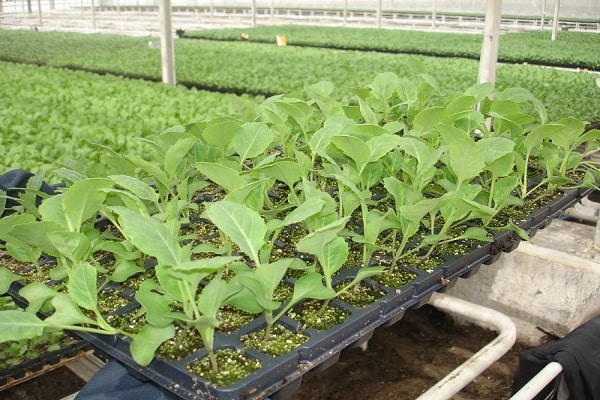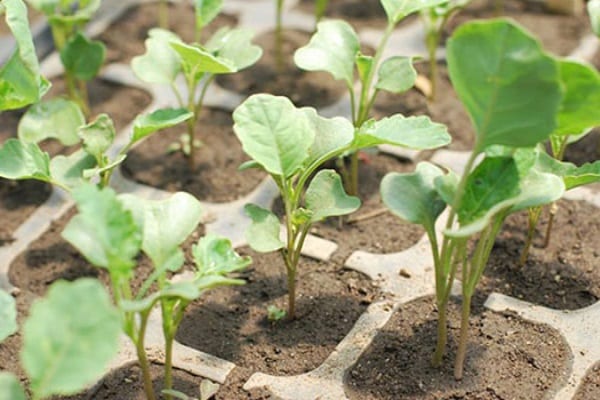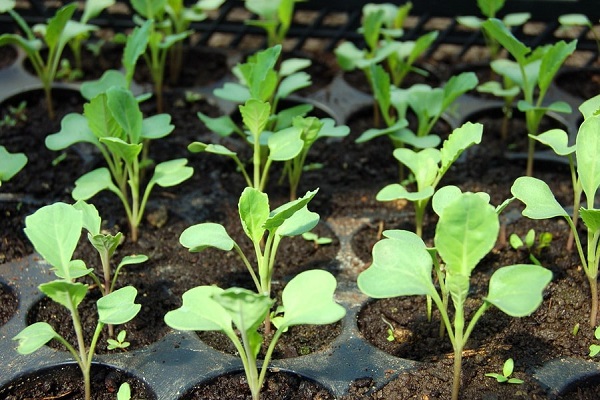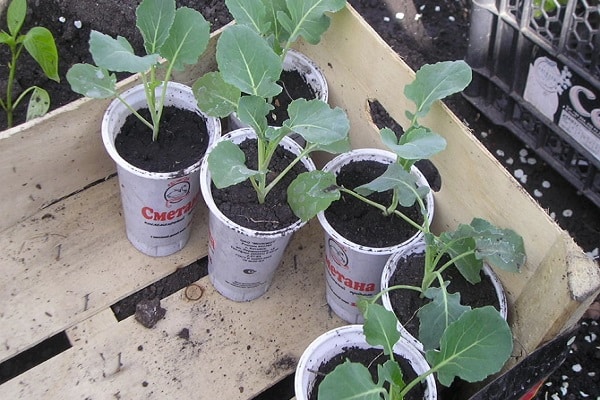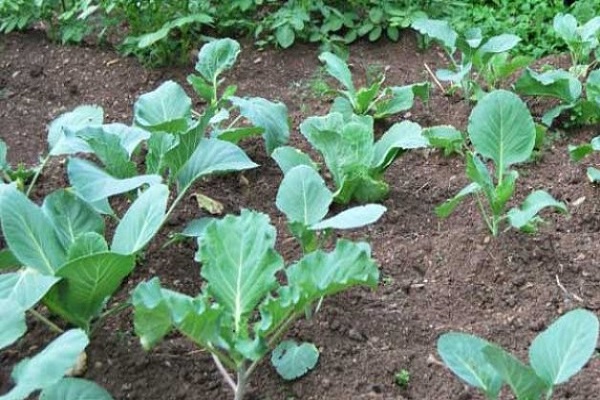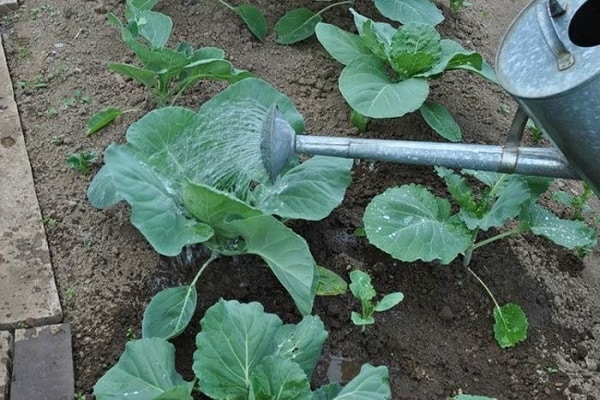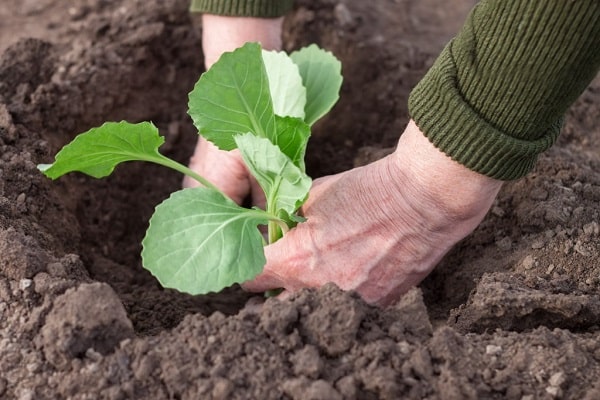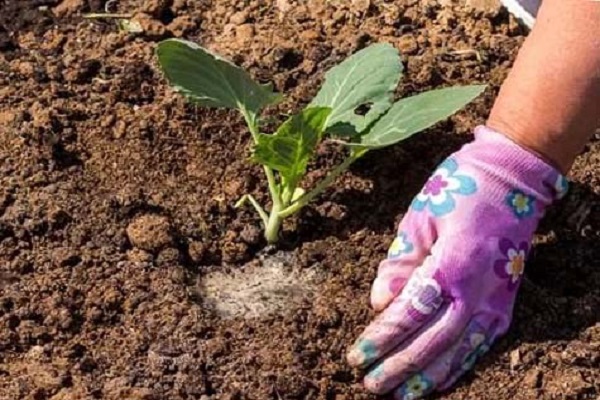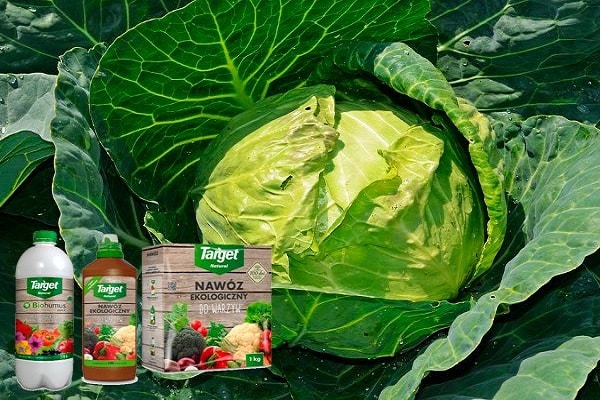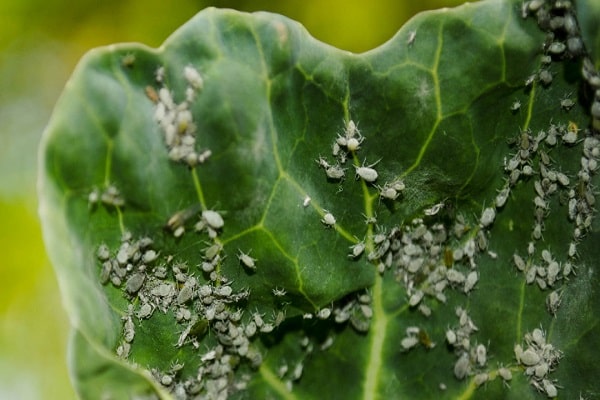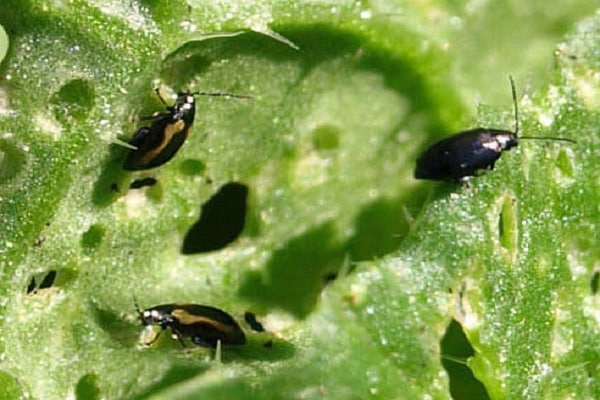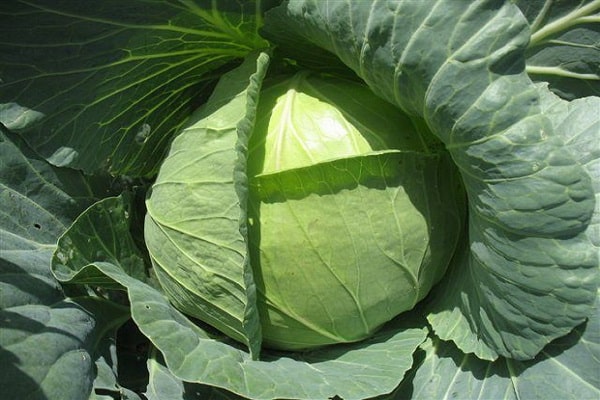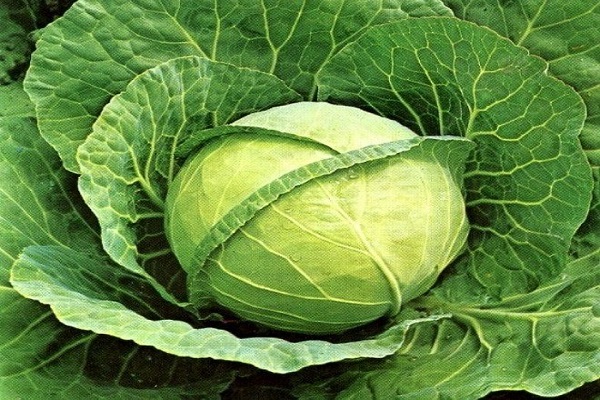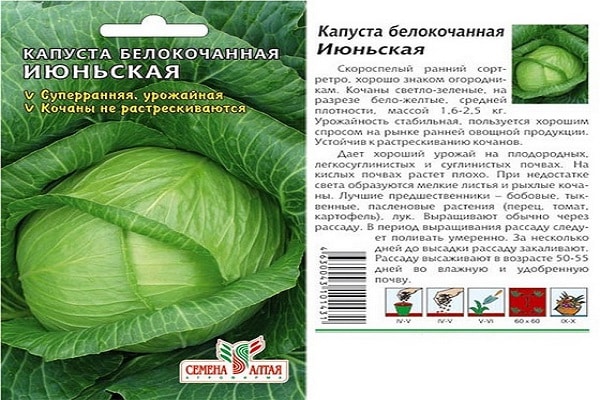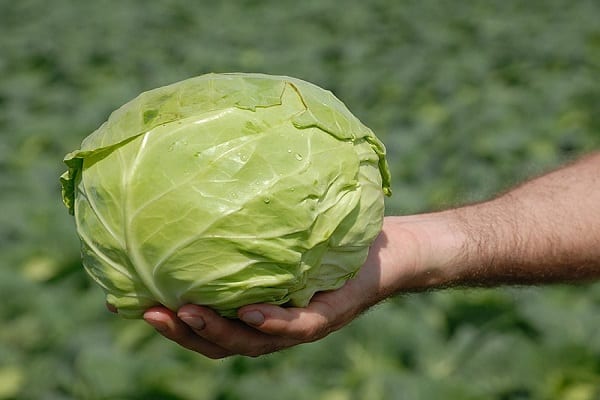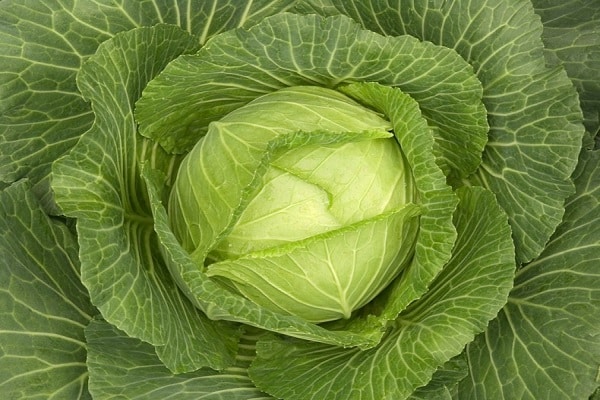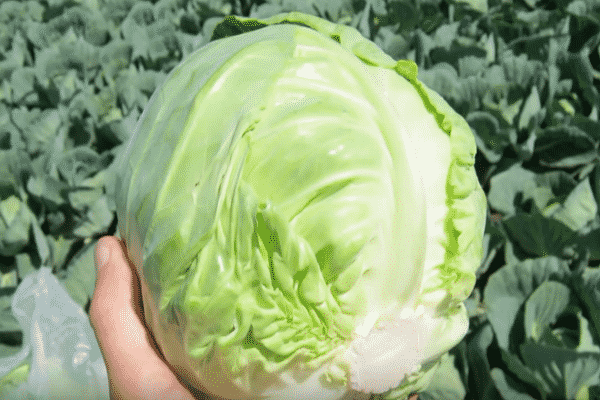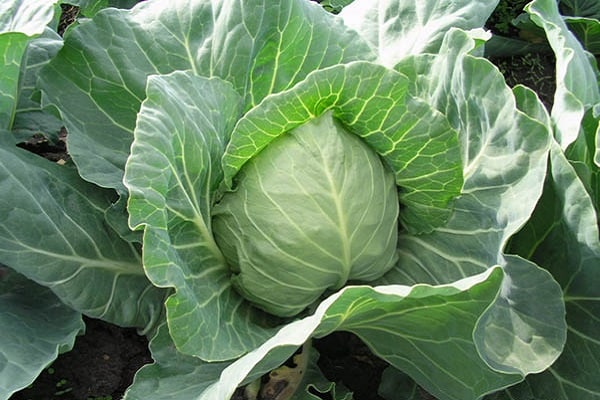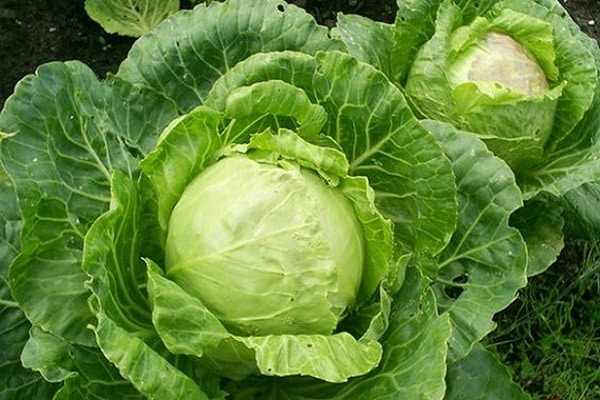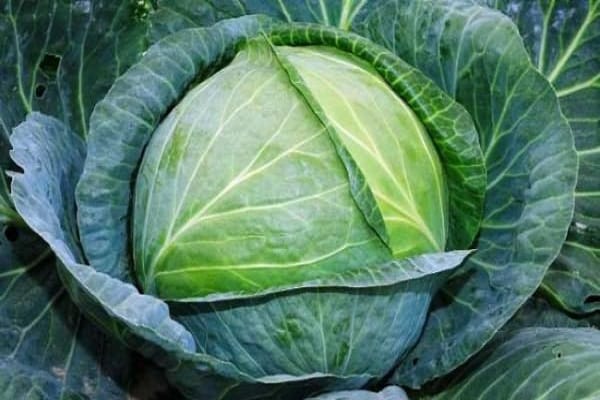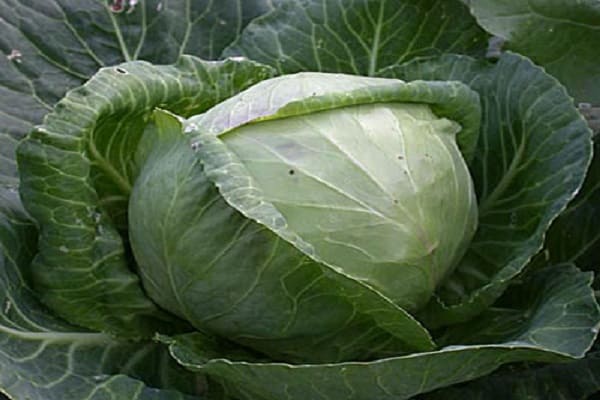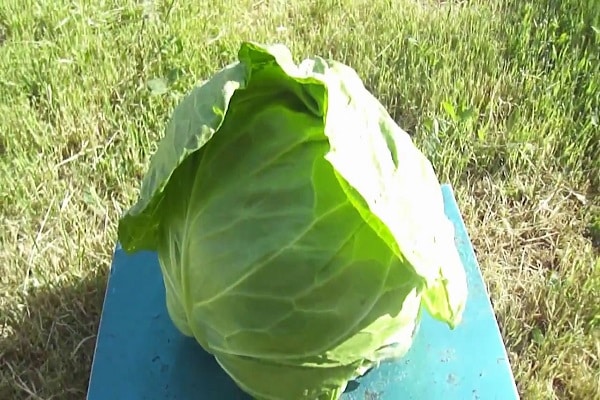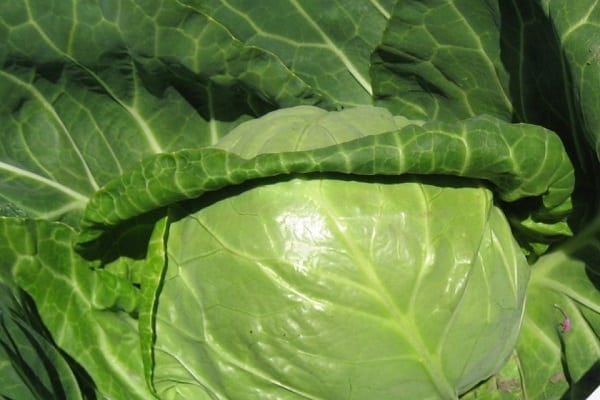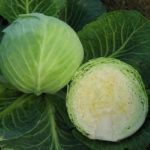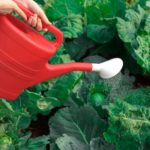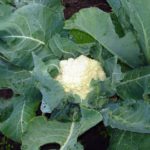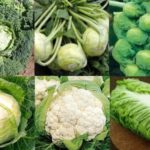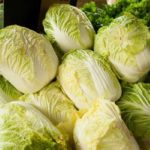Early cabbage, regardless of the variety and ripening period, is intended for fresh consumption or for preparing various seasonal dishes that do not require long-term storage. The yield of early vegetables is low, and ripe heads of cabbage reach a size one and a half to two times smaller than that of cabbage of late varieties, but the purpose of June forks is different, as the name implies - to replenish the body’s vitamin reserves in the early summer, and not to prepare for future use
- How to grow early cabbage
- Preparing the site for planting
- Seedling growing method
- Seedless growing method
- Planting cabbage in open ground and care
- How to feed cabbage
- Cabbage pests
- The best early varieties
- "Cossack F1"
- "Transfer F1"
- "June"
- "Pandion F1"
- "Nozomi"
- "Sir F1"
- "Oracle F1"
- "Golden Hectare"
- "Copenhagen Market"
- "Gribovskaya 147"
- "Akira F1"
How to grow early cabbage
Starting to count the days from the moment sprouts appear in the seedling box, harvesting early cabbage can be planned for 75-115 days. About two months of this period will take the formation of cabbage heads in the garden bed or in the greenhouse. It should be noted that the vegetable does not ripen in mass at the same time. With reasonable planting, that is, with gradual introduction of seeds into the soil, and with a pause of 1-3 days before the next sowing, the harvest of early varieties can be extended over 2-3 weeks.
Preparing the site for planting
When growing early varieties of cabbage on one plot of land regularly, it is necessary to move the bed every three years to the places where nightshade and legumes, potatoes or beets previously grew. Reviews from gardeners confirm that such soil will by default be rich in all the microelements necessary for early varieties, have the lightness characteristic of loam or sandy loam and have an acidity below the average level.
However, in any case, after autumn digging, the depleted soil will require superphosphate or compost fertilizing.
Fertilizer for application to the soil is formed only after assessing the acidity of the soil. If the analysis (vinegar test) indicates a high acidity value, first liming the soil is carried out, and then it is fed.
Seedling growing method
Seeds of early varieties, collected personally from the previous harvest, undergo disinfection and growth stimulation before planting - first they are kept in a manganese solution, then exposed to contrasting temperatures. After drying, the material is considered ready for planting.
Growing cabbage seedlings at home involves difficulties maintaining temperature conditions and access to fresh air, so it is better to move the boxes, immediately after the first greens hatch, to a closed greenhouse or to a glassed-in balcony. Thermometer readings during the day are regulated within 18-21 0C, but at night the thermometer should not rise above 8 0C (optimally 6-7 0C), otherwise, the grown seedlings will all go into a long stem.
With the appearance of the first true leaf, night and day temperatures are almost equal:
- 16-18 0C - per day;
- 14-15 0S - at night.
From the same period, the upper (window) balcony or greenhouse frame can be opened slightly for 1-2 hours a day, providing a slight draft. For plants in a greenhouse, weekly preventive spraying with a manganese solution (pale) begins at this time. For balcony cabbage seedlings of early varieties, the procedure is carried out twice during the entire “nursery” period.
On the 12-14th day from the appearance of sprouts, cabbage seedlings are dived into peat containers, cutting the central root rod by 1/3 of the length before planting.
Seedless growing method
The description of the method differs from the usual seedling method in that early cabbage seeds are planted directly into the soil, waiting for good weather conditions and stable soil temperatures, or using the greenhouse method. Early variety cabbage seeds are introduced into the ground, sprinkling them in a continuous stream into a moistened furrow, deepening the material by 2 cm. After the formation of the 4th leaf, the cabbage sprouts are broken through, leaving the strongest and strongest ones.
The frequency of abandoned seedlings should not exceed 5 plants per 1 m2.
Watering of early variety white cabbage is carried out with the same frequency, before the sprouts appear and after, already when the true leaves are formed. In arid zones, the regularity of soil moisture will be four times a week at a rate of 20 liters per 1 m2, in mid-latitudes - three times a week at a rate of 13-15 liters. Other aspects of caring for growing early cabbage will not differ from those used for growing seedlings.
Next - planting and care in open ground.
Planting cabbage in open ground and care
A sign that it is time to transfer early cabbage to open ground as quickly as possible is the appearance of the 6th true leaf on the seedling - approximately on the 55-60th day. In central Russia, this date is best timed to coincide with the 15th-20th of April, when ground temperatures during the day rise to 12-13 0WITH.
Planting early varieties of plants in a permanent place is done immediately after the rain or on its eve. If the soil is dry, it is first shed generously.
Early varieties of cabbage love space, so frequent planting of sprouts will impair its growth. The optimal scheme is 50 by 50 cm. If, for a number of reasons, yellowed leaves appear on some seedlings 5-8 days after transplantation, the sprout is removed and another one is planted in its place.
How to feed cabbage
Before the ovaries of early cabbage form heads, the plant is fed with nitrogen fertilizers, and when the head of cabbage ripens, with potassium supplements. Fertilizing begins to be introduced from the seventh day after planting cabbage and, first of all, urea diluted in water at the rate of - 5 teaspoons per bucket. This amount of fertilizer is enough to water 3 m2 cabbage patch
Another 5-7 days later, cabbage, to form a larger head of cabbage, is stimulated with an infusion of chicken manure, diluted with water 24 hours before watering, then settled, strained and supplemented with clean water in a ratio of 1:10.
Cabbage pests
In the spring, insects are most active and voracious, so the question is: why does cabbage turn yellow or wilt?, to a greater extent relates to their vigorous activity. There are several of the most “evil” inhabitants of cabbage beds:
- Cruciferous flea beetle. To combat it, naphthalene is used, ground with fine sand, taken in the proportion of 1 part naphthalene to 5 parts sand;
- Cabbage aphid. It is washed off by abundantly irrigating the seedlings with a 2% solution of anabasine sulfate or tobacco infusion diluted with soapy water.
If early variety cabbage turns yellow and does not respond to rehabilitation actions, after removing pests from the garden bed, the plant is replaced with a healthy one. There is no point in doing this before all the insects have been expelled.
The best early varieties
In fact, the characteristic of all early varieties of white cabbage approximately the same, but still, setting out to start growing a quick-ripening vegetable, gardeners carefully study the descriptions of various hybrids, hoping to single out the best varieties from the mass of proposals. Below is the top most popular types of early vegetable in Russia and each variety is given a corresponding description.
"Cossack F1"
The early-ripening hybrid cabbage “Kazachok” will produce a harvest already 90-96 days from the moment of sowing or 45-47 days from the start of growing cabbage in open ground. When ripe, the maximum weight of a cabbage fork of this variety is 1.6 kg.
External characteristics of the variety: an even, rounded vegetable with a pale green outer leaf and a warm, yellowish core. The taste of the hybrid is neutral. The variety tolerates low temperatures well and is resistant to root rot.
"Transfer F1"
“Transfer” cabbage, after ripening, produces a smaller head of cabbage than the average size - 1-1.2 kg. The hybrid requires a longer period of time for ripening than the previous variety - at least 130 days from sowing the seeds in the box. The vegetable yield is very high - under favorable conditions, about 1000 kg per 1 ha. This is explained by the variety’s calm attitude to cold, the cabbage head’s resistance to cracking, and the “Transfer” cabbage’s low susceptibility to disease.
The ripening of heads of cabbage of this variety occurs in approximately one period. Characteristics of external qualities - rich light green color of the outer leaf and white core.
"June"
White cabbage "Iyunskaya" is an ultra-early hybrid with a ripening period of 93-95 days from the moment of sowing the seeds. This variety does not suffer from thickened plantings and calmly tolerates a drop in the thermometer to 4 0C. June cabbage produces a high yield of the largest heads of cabbage of all known early varieties of these cruciferous vegetables - their weight reaches 2.4 kg. When harvested late, cabbage heads do not burst and do not rot from the stem.
According to the description, June cabbage is one of the oldest early hybrids.
"Pandion F1"
The relatively cold-resistant variety “Pandion” is recommended for planting starting from the 10th of May. Its cultivation, on average, takes 95-100 days and does not involve much difficulty.Cabbage "Pandion F1" is resistant to rotting and does not shoot arrows for a long time when left standing. The size of the head of cabbage when the cabbage ripens does not exceed 1.5 kg.
The taste characteristics are high - the variety is widely used for preparing first courses and salads.
"Nozomi"
Nozomi cabbage is presented in the form of an early-ripening vegetable with a super-dense head structure weighing 1.3-1.5 kg. The vegetable is suitable for growing for wholesale sale, as it ripens with full preservation of its presentation, and tolerates short-term transportation well.
The yield of the variety is high - within 3000 kg of cabbage per 1 hectare (hectare) of planted area. The variety is slightly susceptible to root rot and Alternaria, and tolerates cold well.
"Sir F1"
A French hybrid, Sir F1 cabbage does not suffer as much from heat as other early varieties and does not stop developing at temperatures above 250C. When to cut off the heads of cabbage from the first harvest, you can determine by the appearance of the vegetable - the cabbage is flattened to a spherical shape, the leaves turn pale to a faded green hue.
The weight of cabbage heads ranges from 2-2.3 kg, the planting density is up to 65,000 seedlings per hectare of planting area.
"Oracle F1"
Cabbage "Oracle F1" ripens on 93-97 days from planting the seeds in the ground and belongs to the ultra-early varieties. It is often grown in polycarbonate greenhouses or under double film, starting from the first days of April. In this case, already at the end of June it is possible to obtain a harvest of identical-looking, round cabbage heads that have a good presentation.
The approximate weight of cabbage heads is 1.5 kg.
"Golden Hectare"
Cabbage "Golden Hectare", with excellent taste, has the shortest shelf life in unprocessed form - up to 30 days. At the same time, cabbage tolerates short transportation well, produces a very significant yield - about 8000 kg per hectare - and has practically no enemies among insects.
The size of the heads is above average, the weight of the vegetable is about 2.5 kg.
"Copenhagen Market"
Cabbage "Copenhagen" belongs to the mid-early cruciferous species and produces fairly average but stable yields, within 4000 kg per hectare. Heads of cabbage are best cut before they are fully ripe, as the variety tends to accumulate moisture and crack when harvested late.
The average weight of cabbage heads is 2.4 kg; the crop is harvested simultaneously from the entire planting area.
"Gribovskaya 147"
“Gribovskaya” cabbage is distinguished by its uniquely high content of ascorbic acid in its leaves, which is why people try to grow this variety in as large quantities as possible. True, due to the long ripening period (up to 115 days), this cabbage appears on sale later than other early varieties. Nevertheless, its cultivation is considered profitable, since cabbage tolerates temperature fluctuations well, is unpretentious to humidity and invariably has an excellent presentation.
Disadvantages - the description of the variety emphasizes that “Gribovskaya” is weakly resistant to clubroot and rotting, and also bursts when there is excess moisture.
"Akira F1"
Akira cabbage is a record holder for early ripening, because its cultivation takes about 90 days from the moment the seeds are planted. Due to the need to quickly plant the vegetable in the ground, it is not recommended to prepare open beds for the Akira variety. It is best to use a tunnel film shelter.
Like most hybrid varieties from Asia, Akira has a very compact, neat appearance - a small head of rich salad color, weighing up to two kilograms, and dense, shiny upper leaves. “Akira” tolerates transportation better than other varieties, does not rot in bulk and can be stored for up to two months at low temperatures.

